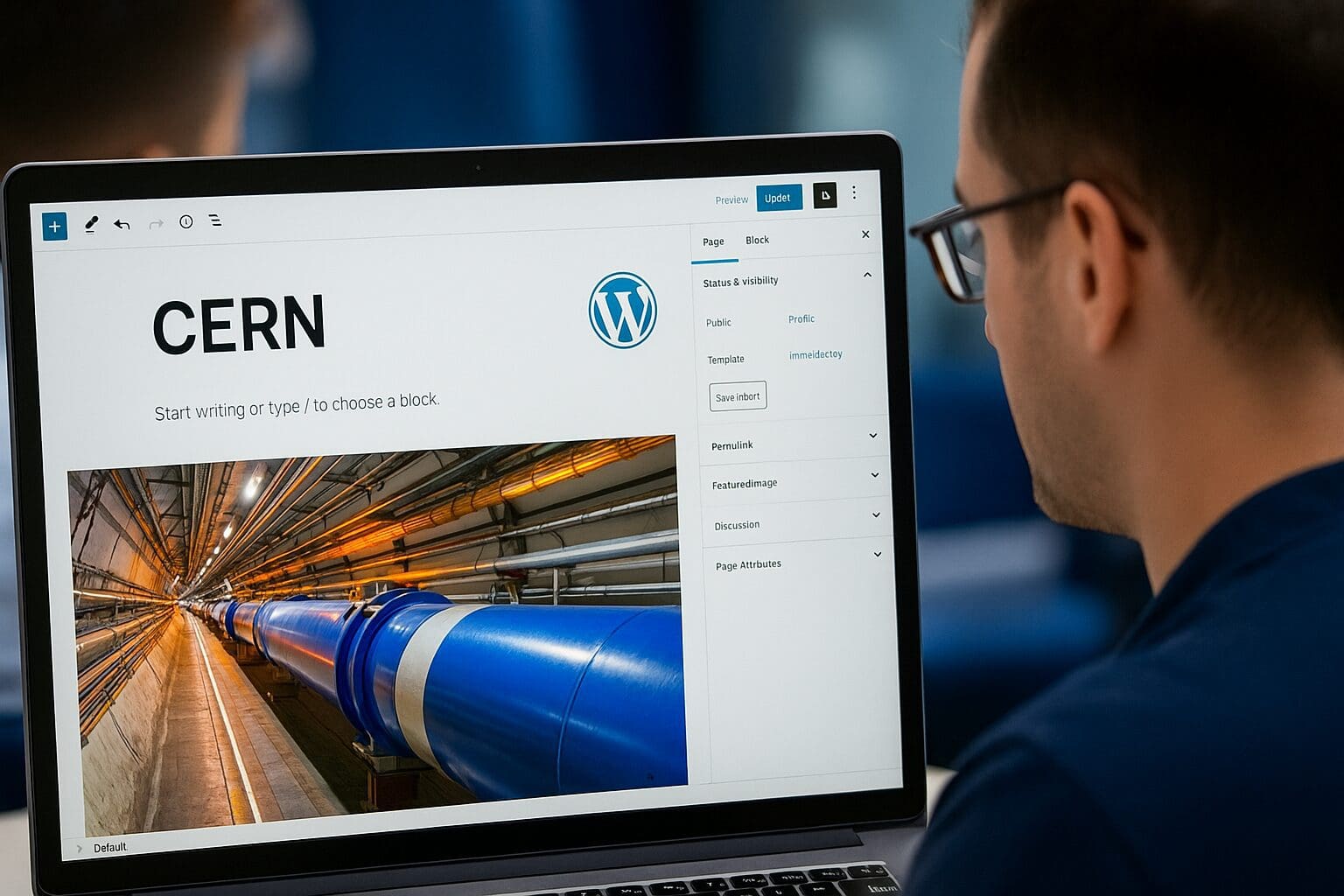
From the lab to the web: Why CERN is switching to WordPress
When it comes to pioneering the future, CERN isn’t just smashing particles—it’s also reinventing how its massive web presence is managed. In a move that surprised some but makes perfect sense upon closer inspection, the European Organization for Nuclear Research is migrating more than 1,000 websites from Drupal to WordPress.
And no, this isn’t just about aesthetics. It’s a fundamental shift in philosophy: usability over complexity, flexibility over rigidity, content creation over code maintenance.
Why the change?
CERN’s digital ecosystem is vast. It spans internal portals, scientific reports, outreach hubs, and event platforms. But with that scale came a problem: Drupal was no longer serving the needs of everyday users.
The CMS had grown increasingly difficult to maintain, customize, and secure. For researchers and staff who simply needed to communicate effectively with their audiences, Drupal felt like a barrier rather than a tool. The tipping point? Accessibility, usability, and the ability to empower non-developers.
WordPress, with its intuitive interface and modular architecture, provided a natural solution. It’s not just a blogging platform anymore—it’s a full-scale content management framework, and CERN is embracing it fully.
A carefully engineered rollout
This isn’t a weekend migration. CERN’s IT department has designed a multi-stage rollout that balances stability and scalability:
-
A lightweight version of WordPress launched in late 2024.
-
Early 2025 saw an internal MVP and pilot testing.
-
Full access to WordPress began in May 2025.
-
From July 2025, automated migrations begin for eligible Drupal sites.
-
By 2026, Drupal will be phased out entirely.
Each step is carefully documented, with support channels in place to assist content owners through the transition.
📌 Official CERN announcement: home.cern/news/announcement/computing/wordpress-now-available-cern-websites
Less code, more communication
For years, publishing content at CERN required help from developers. Even small updates meant navigating complex UIs and understanding the quirks of a system that was never designed for ease of use. WordPress changes all of that.
-
Scientists and staff can now build and update pages independently.
-
The new platform emphasizes accessibility and performance.
-
A centralized WordPress theme ensures consistency across CERN’s digital properties.
-
Automatic security updates and plugin management remove the burden from users.
What it signals to the world
This move isn’t just internal housekeeping. It sends a clear message: even the most complex scientific institutions value simplicity, clarity, and agility in how they communicate.
By choosing WordPress, CERN joins a global community of creators, organizations, and institutions that prioritize user-first design in their digital strategy.
So, whether you’re running a science blog, a government portal, or a university lab site—if it’s good enough for CERN, it’s probably good enough for you too.

![Vultr_logo_high_res[1] Vultr_logo_high_res[1]](https://b3400949.smushcdn.com/3400949/wp-content/uploads/elementor/thumbs/Vultr_logo_high_res1-qy0twclne9rg9ku0ilspwh1zqace3ki9i98m9n6680.png?lossy=2&strip=1&webp=1)

